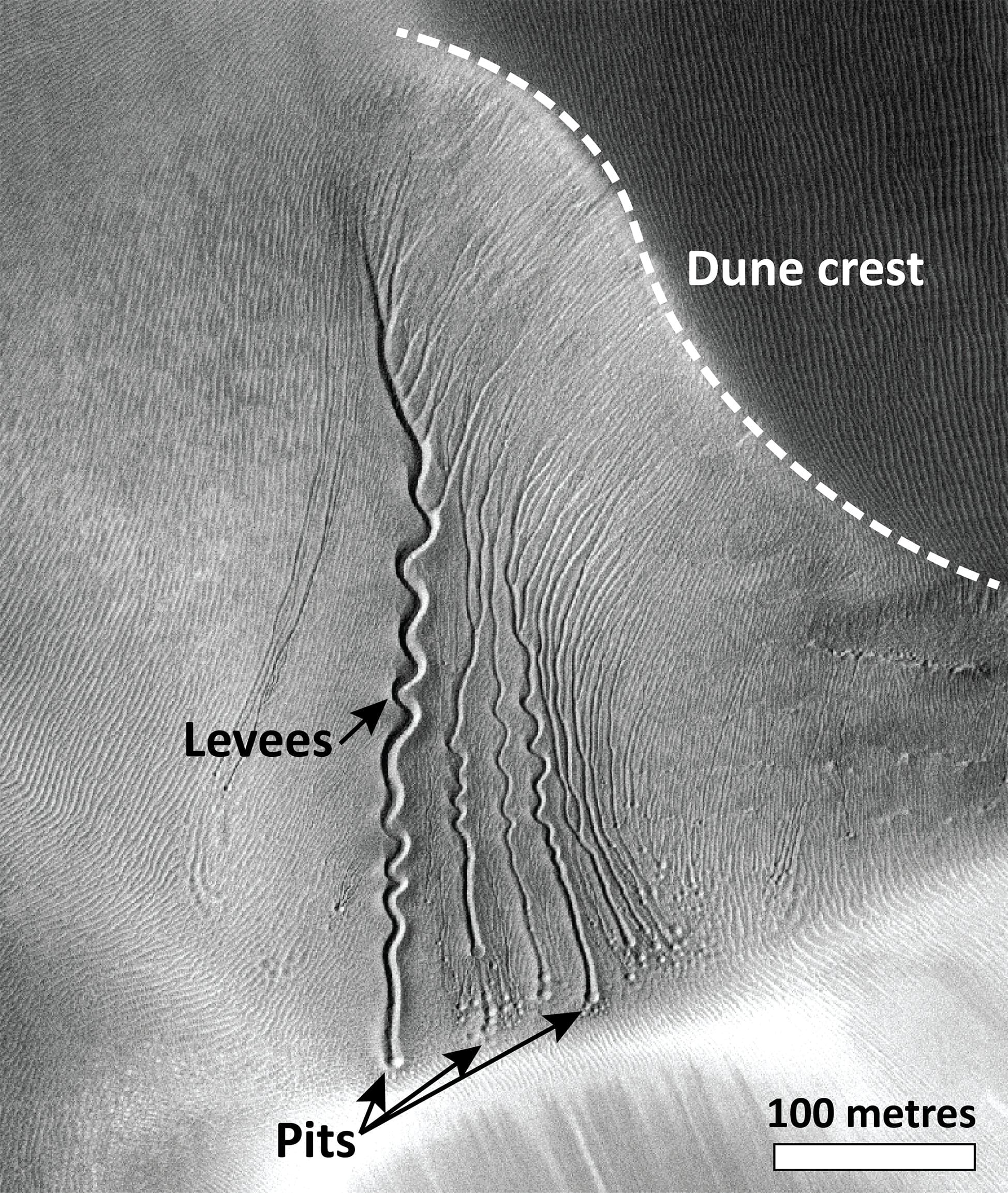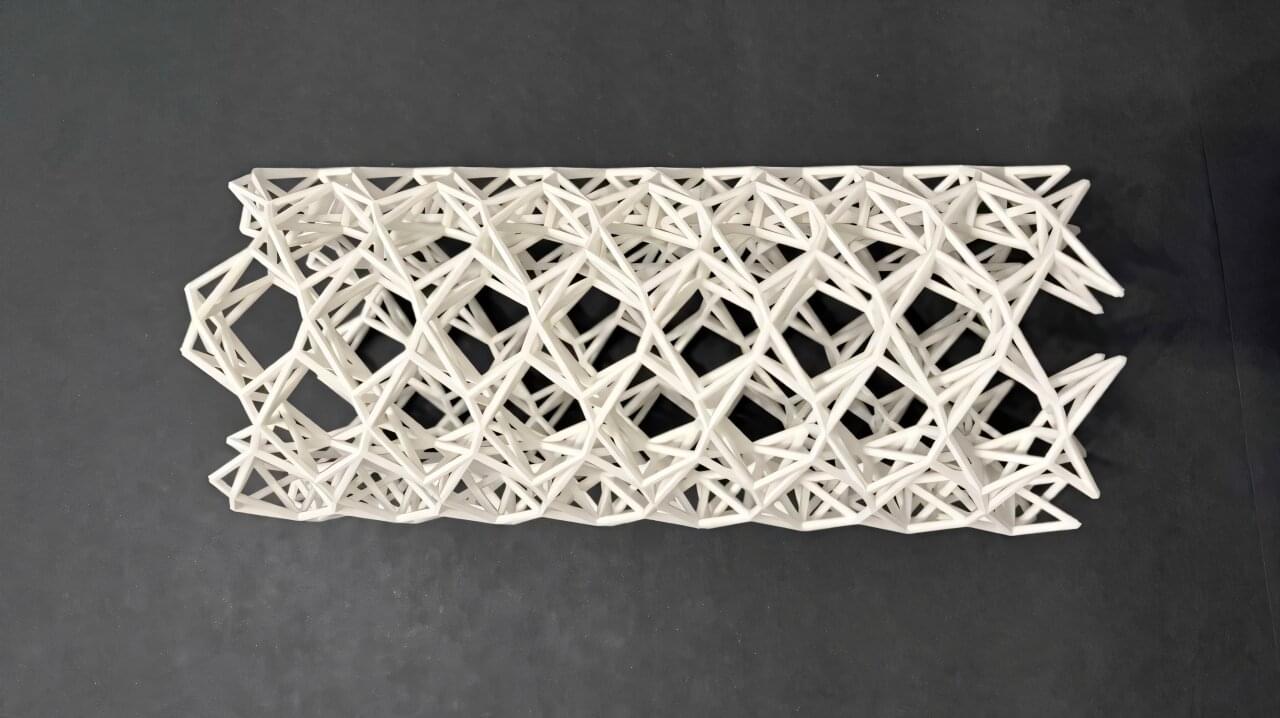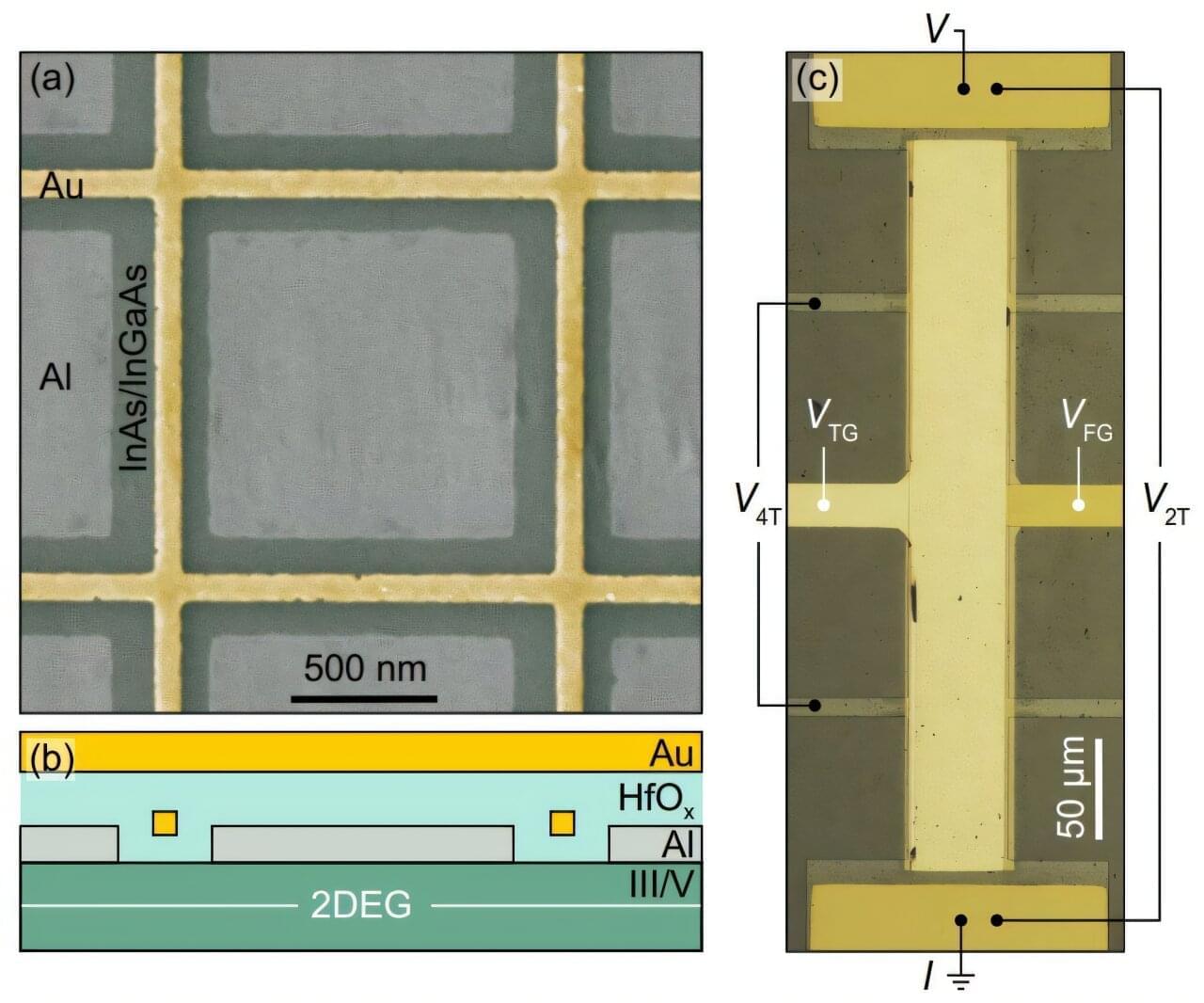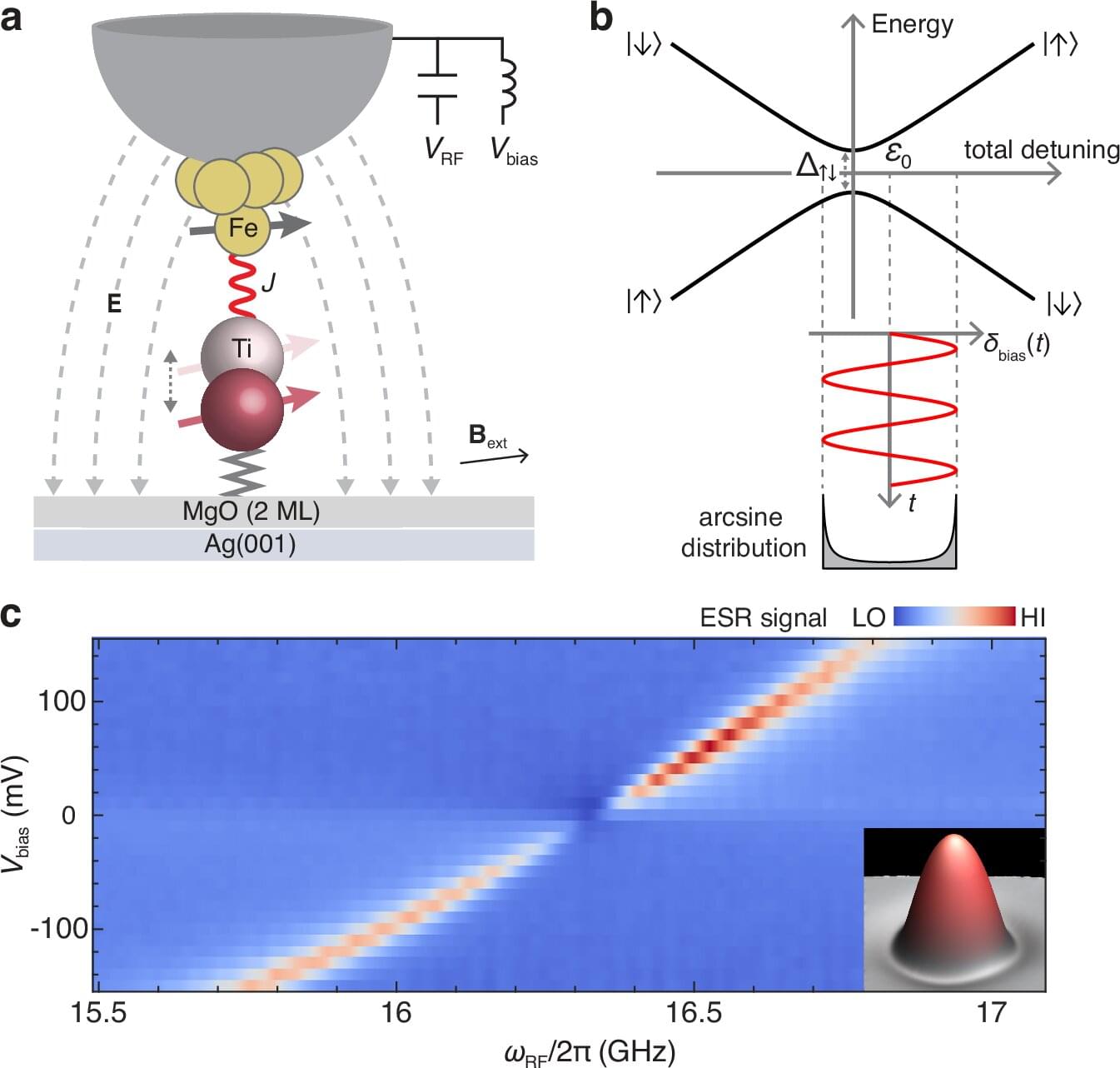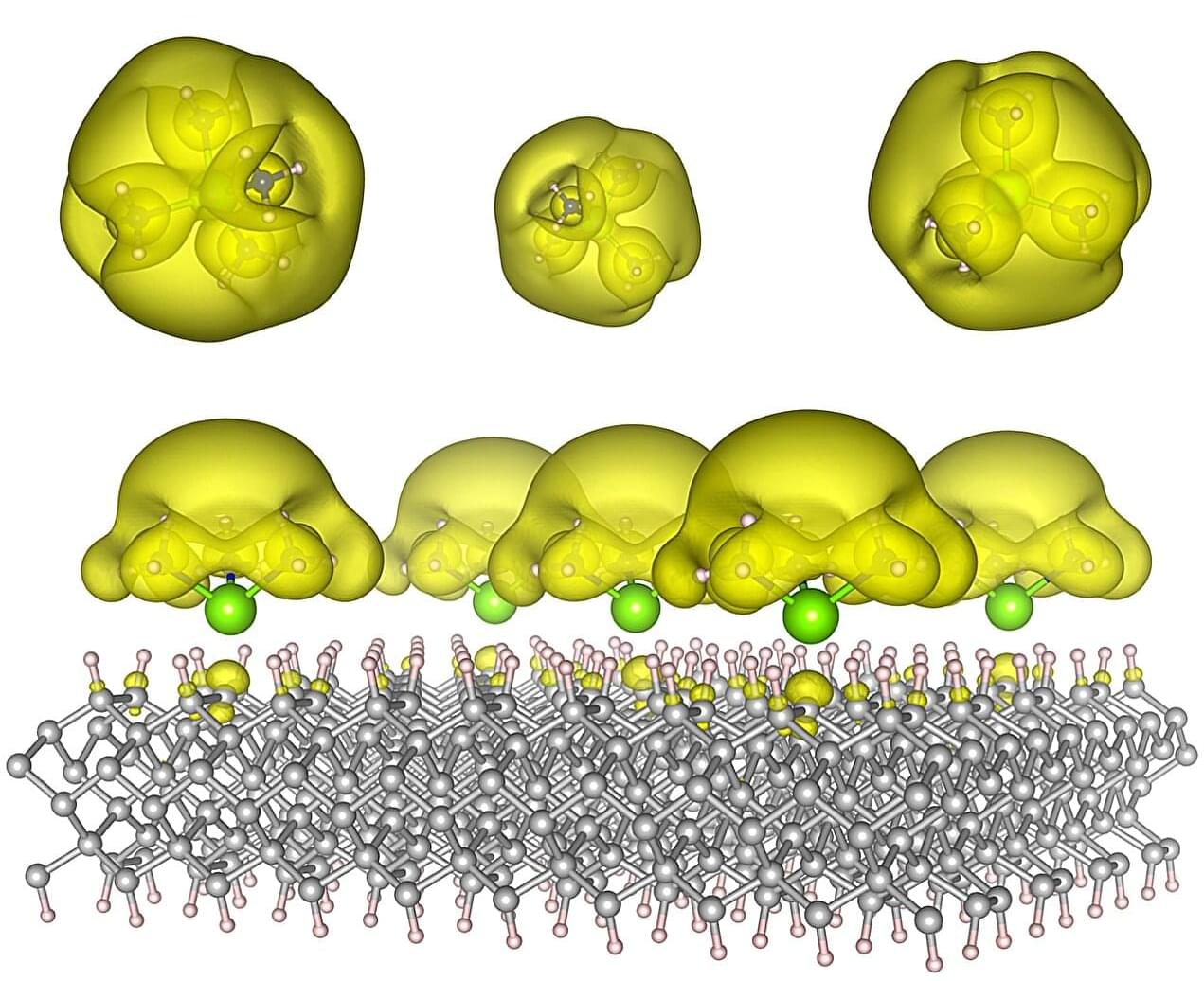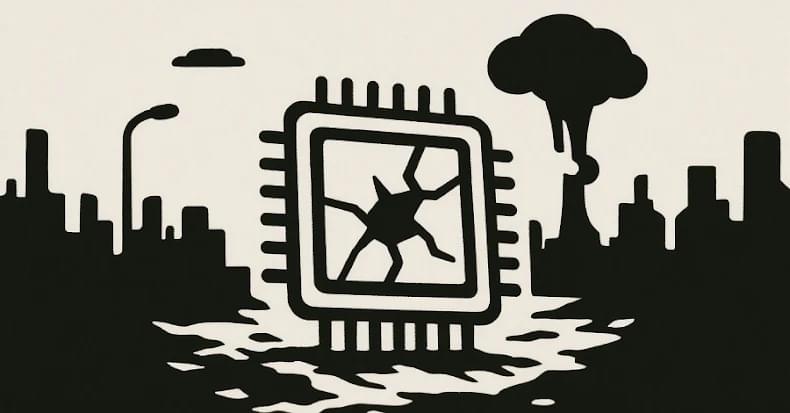Did life really exist on Mars after all? Unfortunately, there is no conclusive evidence for this yet. Nevertheless, it would seem that some form of life was the driving force behind the mysterious Martian dune gullies. Earth scientist Dr. Lonneke Roelofs from Utrecht University has investigated how these gullies were formed. In a test setup, she observed that blocks of CO2 ice “dug” these gullies in a unique way.
“It felt like I was watching the sandworms in the film Dune,” Roelofs says. Her findings are published in Geophysical Research Letters.
Other researchers had previously suspected that these blocks could play a role in the formation of the gullies. Roelofs has now proven this by having CO2 ice blocks actually dig those gullies in an experiment—a phenomenon that we do not know here on Earth and that had never been observed by anyone before.
